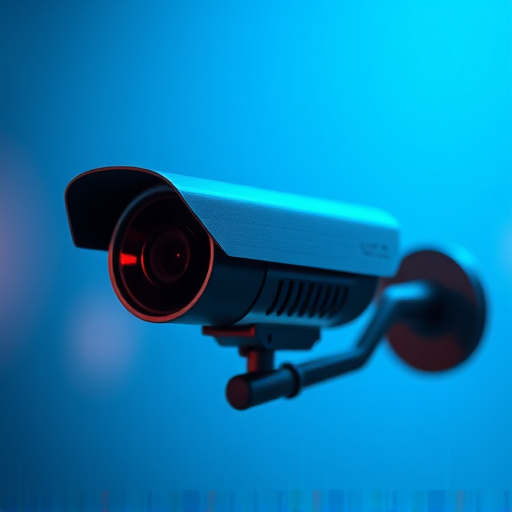Hidden sound recorders integrated into spy cameras and microphones offer discrete yet powerful surveillance solutions. These devices blend seamlessly into surroundings like pens or plants, capturing clear audio and video for home security and professional investigations. With high-quality recordings, compact size, and remote access features, they enhance secrecy and ease of deployment. However, their use raises legal and ethical concerns regarding privacy rights, emphasizing the need for responsible usage and understanding of legal boundaries. When choosing, prioritize discretion, quality, and versatility, opting for devices with superior audio capabilities, advanced noise cancellation, and user-friendly operation for effective surveillance and documentation.
Discover the power of hidden sound recorders, a discreet surveillance tool that captures audio without drawing attention. This comprehensive guide explores their inner workings, where a spy camera and microphone work in harmony to record vital sounds. We delve into real-world use cases, from home security to professional investigations, and navigate the legal landscape, highlighting ethical considerations. Learn what features to seek in a high-quality hidden sound recorder to ensure effective and legally compliant audio surveillance.
Understanding Hidden Sound Recorders: A Discreet Tool for Surveillance
Hidden sound recorders, often integrated into spy cameras and microphones, offer a discreet and powerful tool for surveillance. These innovative devices are designed to blend seamlessly into their surroundings, whether it’s a small, unassuming gadget disguised as everyday objects like pens, keys, or even plants. Under the radar, they capture audio with remarkable clarity, making them invaluable for various purposes, from home security to professional investigations.
The technology behind these hidden sound recorders is sophisticated yet user-friendly. They typically feature advanced audio sensors and digital recording capabilities, ensuring high-quality recordings without sacrificing secrecy. Their compact size and remote access features make them easy to deploy and manage, allowing users to monitor environments remotely and gather evidence discreetly.
Components and Functionality: Spy Cameras and Microphones Work Together
Hidden sound recorders, often equipped with advanced spy cameras and microphones, offer a seamless blend of visual and auditory surveillance. These devices are meticulously designed to operate discreetly, making them ideal for various applications ranging from home security to professional investigations. The spy camera captures high-resolution videos while simultaneously recording clear audio through the integrated microphone. This combination ensures that every detail is documented accurately, providing users with comprehensive evidence.
The functionality of these devices is enhanced by their ability to record in hidden locations without drawing attention. Whether installed in a home or deployed for industrial espionage, spy cameras and microphones work in tandem to capture unaltered footage and sounds. Their compact size and remote control capabilities further contribute to their effectiveness, enabling users to access live feeds or retrieve recorded data remotely via smartphone apps or computers.
Use Cases: When and Why You Might Need a Hidden Sound Recorder
In today’s digital age, there are various scenarios where discretion is paramount, prompting individuals to seek innovative solutions like hidden sound recorders. These devices serve as versatile tools for a multitude of use cases. For instance, they can be invaluable in security and surveillance settings, offering silent yet powerful monitoring capabilities. Whether it’s a confidential business meeting, a sensitive legal discussion, or a private conversation in a crowded space, a hidden sound recorder ensures every word is captured without anyone suspecting its presence.
Additionally, these devices find application in personal safety and evidence collection. In situations where one might feel threatened or need to document interactions, a discreet spy camera and microphone can provide crucial audio and visual evidence. This could be essential for individuals who frequently travel alone, encounter suspicious activities, or require solid proof for legal or insurance purposes. The versatility of these hidden recorders makes them a compelling choice for anyone prioritizing privacy, safety, and the preservation of vital information.
Legal Considerations: Ethical and Privacy Implications of Using Hidden Recorders
The use of hidden sound recorders, often integrated into devices like spy cameras and microphones, raises significant legal and ethical considerations. In many jurisdictions, recording conversations or private discussions without explicit consent is illegal and can lead to severe penalties. The right to privacy is a fundamental human right, and citizens have the expectation that their personal spaces and communications are secure from unwarranted intrusion.
Hidden recorders can be used for legitimate purposes such as evidence gathering in criminal investigations or quality control in professional settings. However, they can also be exploited for malicious intentions like surveillance, stalking, or corporate espionage. As technology advances, these devices become more accessible and capable, posing a challenge to privacy laws and regulations. It is crucial for both users and law enforcement to understand the legal boundaries surrounding hidden sound recorders to ensure ethical use and protect individual rights.
Choosing the Right Equipment: Features to Look for in a High-Quality Hidden Sound Recorder
When selecting a hidden sound recorder, also known as a spy camera and microphone combination, it’s crucial to consider several features that ensure optimal performance and discretion. Look for devices with high-quality audio capabilities, capable of capturing clear and detailed recordings in various environments. Stealth is key; opt for models with compact designs, seamless integration into everyday objects like pens or keys, and advanced noise cancellation technology to avoid detection.
Additionally, consider storage capacity, ease of use, and transmission options. A reliable hidden recorder should offer sufficient memory, straightforward operation, and the ability to transfer recordings wirelessly for easy access and sharing. These features collectively contribute to making your hidden sound recorder a versatile tool for surveillance and documentation purposes while maintaining maximum secrecy.
